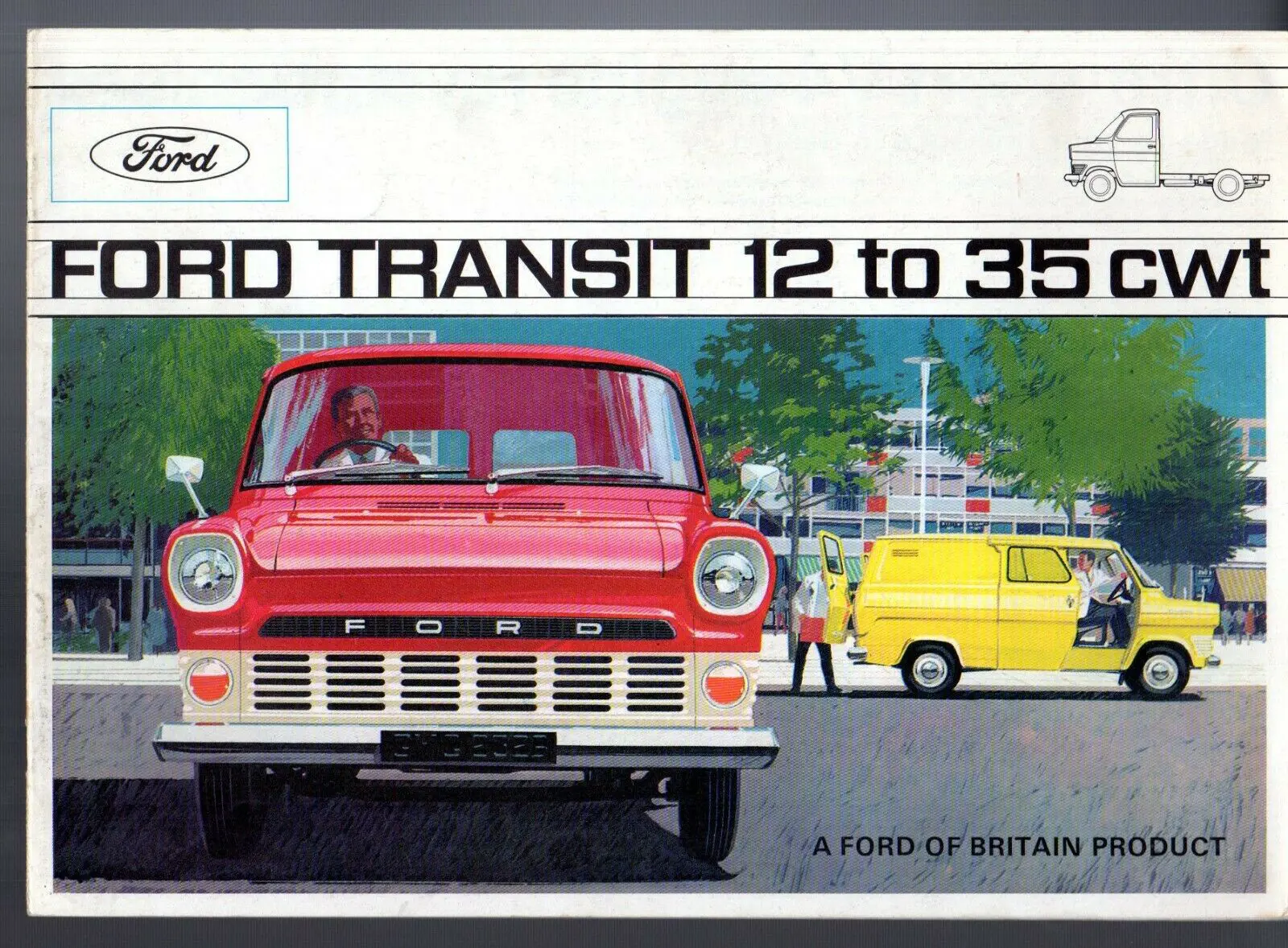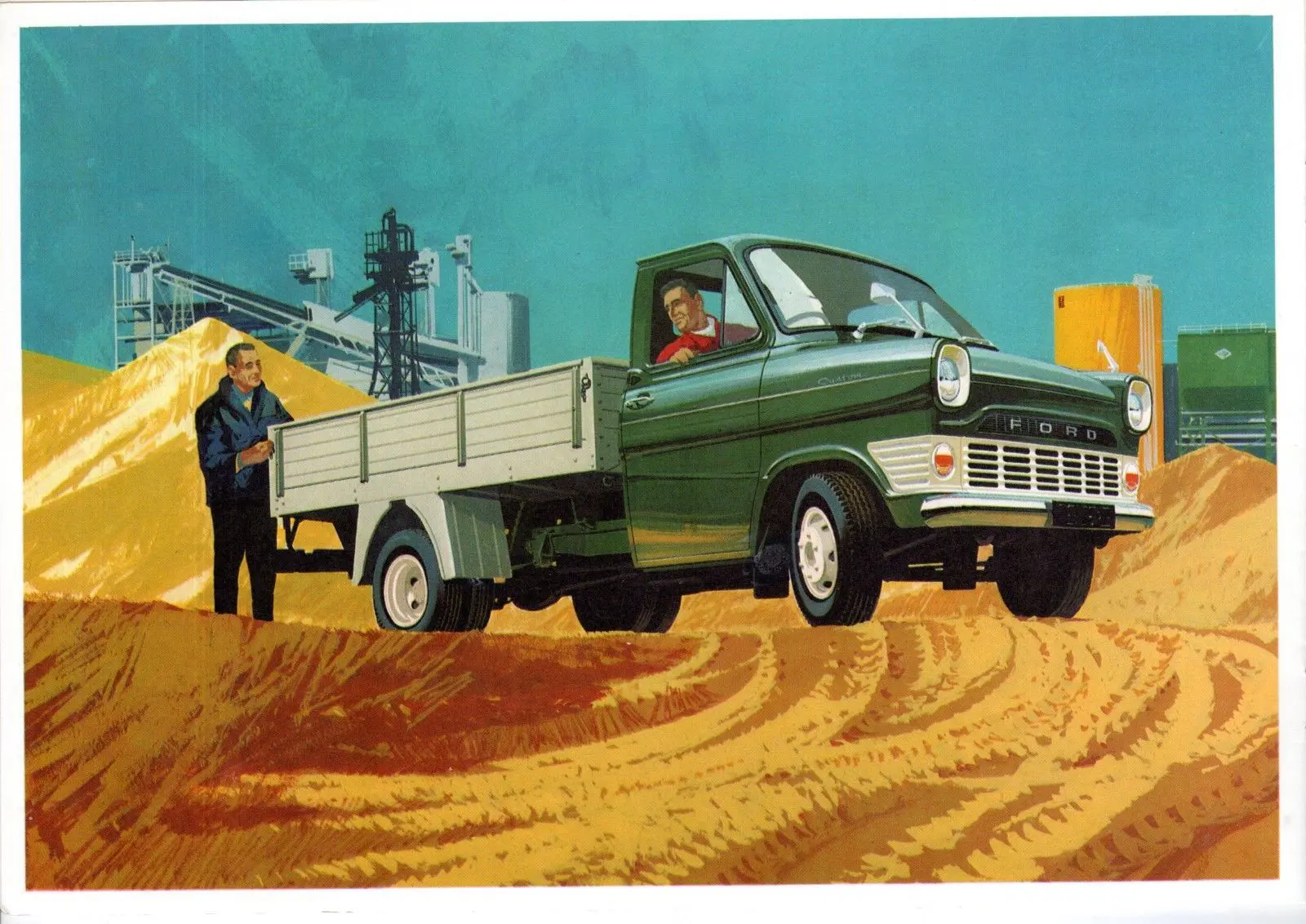THE FORD TRANSIT MK 1 – A CELEBRATION
11 August 2021
The term ‘icon’ is one vastly overused in the media, from soap actors in with the dramatic power of Stingray, to popstars who have extended their range by learning a fourth chord.

Similarly, in terms of British motor vehicles, only a select group may be genuinely described as ‘iconic’ - including the Transit Mk 1. Put simply, this was the Ford that redefined the light commercial.
The Transit was the first joint project from Ford GB and Ford Germany. Their goal was to produce a light commercial vehicle with the comfort and handling abilities of the average car. Many operators regarded Dagenham’s predecessor, the Thames 400E, as somewhat lacking in these two qualities as indeed did many of its rivals. Neither the Commer FC nor the BMC J4 and the Leyland 15/20 was renowned for their dynamic abilities. The Bedford CA was probably superior in that regard, but its design harked back to 1952.
Project Redcap cost Ford some £10 million, and it had to fulfil several criteria. The engines had to cope with stop/start driving on a busy delivery schedule, while the planners rejected forward-control as it meant difficulties for maintenance departments. The future Transit would also not feature independent front suspension, as found on the Bedford; drivers might collide with high kerbs, incurring large repair bills.
As for the van body, it had to accommodate the needs of a variety of potential customers, from high street grocers to milliners. Power was from 1.7-litre and 2.0-litre V4 engines combined with an all-synchromesh gearbox; both were significant sales features in the mid-1960s. As Redcap progressed, Ford initiated night-time tests on public roads and the still speed-limit free M1 to evaluate the motor’s endurance.

The 9th of October 1965 saw the Transit make its bow, with prices starting at £542 for a SWB van and ranging to £1,156 for a 15-seater Custom bus. Commercial Motor magazine was highly impressed: “Handling is first class. The light and accurate steering gear makes it possible to place the machine exactly where you want it without any undue effort. The ride given is comparable to that of many vehicles having independent front suspension: a beam front axle is, in fact, fitted.”
The writer also noted: “I have seen few semi-forward control vehicles of any size that can compare with the accessibility afforded by the Transit layout and I am convinced that the pleasant styling of the bodies will prove attractive to those fleet operators concerned with advertising their company’s products.” In other words, the latest Ford commercial vehicle was one of vast potential.
Naturally, Dagenham’s PR machine went into overdrive, with famous customers including Henry Cooper and the Essex pop group Brian Poole and The Tremeloes. There was also a guest-starring appearance in the entertainingly awful B-film Dateline Diamonds as transport for The Small Faces. This pirate radio drama was released in early 1966 as the support feature to Doctor in Clover and helped spread the message that the Transit was truly “with-it” – a phrase that could seldom be applied to the rival Commer.
When production moved from Langley to Southampton in 1972, the range had already re-defined the British light commercial vehicle. The word ‘Transit’ now defined an entire sector of the market, even if some of its drivers were not precisely image-enhancing; in that same year, Scotland Yard noted they were used in 95 per cent of bank raids. Today the silhouette of the Mk.I version is as recognisable as those of the Mini or the Morris Minor. Automotive icons all.
